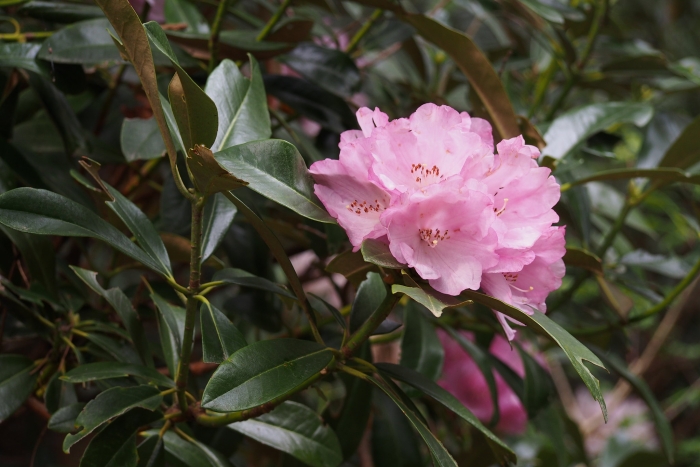Japanese Azalea
(Rhododendron japonoheptamerum)
Japanese Azalea (Rhododendron japonoheptamerum)
/
/

harum.koh
CC BY-SA 2.0
Image By:
harum.koh
Recorded By:
Copyright:
CC BY-SA 2.0
Copyright Notice:
Photo by: harum.koh | License Type: CC BY-SA 2.0 | License URL: https://creativecommons.org/licenses/by-sa/2.0/ | Uploader: harum.koh | Publisher: Flickr |











Estimated Native Range
Summary
Rhododendron japonoheptamerum, commonly known as Japanese Azalea, is an evergreen shrub native to the mountainous regions of Japan, where it thrives in mixed deciduous and coniferous forests. It typically grows to a height and width of 3-6 feet (0.9-1.8 meters), featuring a dense, mounded form. The plant is adorned with showy pink flowers in the spring, which are highly attractive to pollinators and garden visitors alike. The foliage is dark green and glossy, providing year-round interest in the garden.
Japanese Azalea is valued for its vibrant spring blooms and evergreen foliage, which make it an excellent choice for foundation plantings, borders, and woodland gardens. It is also used in Japanese-style and formal gardens for its aesthetic appeal. This azalea requires acidic, well-drained soil and benefits from mulching to maintain soil moisture. While it prefers full sun, it can tolerate part shade, especially in hotter climates. Overhead protection from harsh afternoon sun can prevent leaf scorch. It is important to note that Rhododendrons are susceptible to various pests and diseases, including lace bugs, root rot, and powdery mildew. Regular monitoring and preventive care can help maintain plant health.CC BY-SA 4.0
Japanese Azalea is valued for its vibrant spring blooms and evergreen foliage, which make it an excellent choice for foundation plantings, borders, and woodland gardens. It is also used in Japanese-style and formal gardens for its aesthetic appeal. This azalea requires acidic, well-drained soil and benefits from mulching to maintain soil moisture. While it prefers full sun, it can tolerate part shade, especially in hotter climates. Overhead protection from harsh afternoon sun can prevent leaf scorch. It is important to note that Rhododendrons are susceptible to various pests and diseases, including lace bugs, root rot, and powdery mildew. Regular monitoring and preventive care can help maintain plant health.CC BY-SA 4.0
Plant Description
- Plant Type: Shrub
- Height: 3-6 feet
- Width: 3-6 feet
- Growth Rate: Moderate
- Flower Color: Pink, White
- Flowering Season: Spring
- Leaf Retention: Evergreen
Growth Requirements
- Sun: Part Shade
- Water: Medium
- Drainage: Slow, Medium
Common Uses
Bank Stabilization, Bee Garden, Bird Garden, Border Plant, Butterfly Garden, Hummingbird Garden, Rabbit Resistant, Rock Garden, Showy Flowers, Water Garden
Natural Habitat
Mountainous regions of Japan in mixed deciduous and coniferous forests
Other Names
Common Names:
Scientific Names: , Azalea japonica, Rhododendron japonicum, Rhododendron metternichii, Rhododendron japonoheptamerum, Rhododendron degronianum subsp. heptamerum, Rhododendron metternichii var. hondoense, Rhododendron degronianum var. heptamerum, Rhododendron metternichii var. kyomaruense, Rhododendron japanoheptamerum
GBIF Accepted Name: Rhododendron japonoheptamerum Kitam.